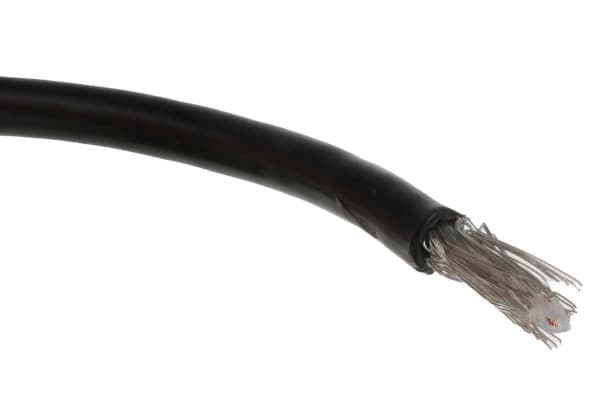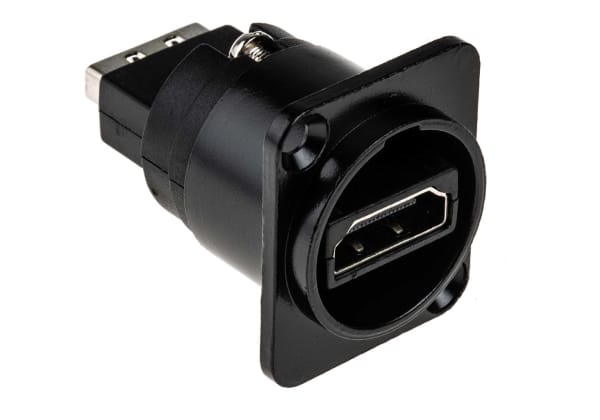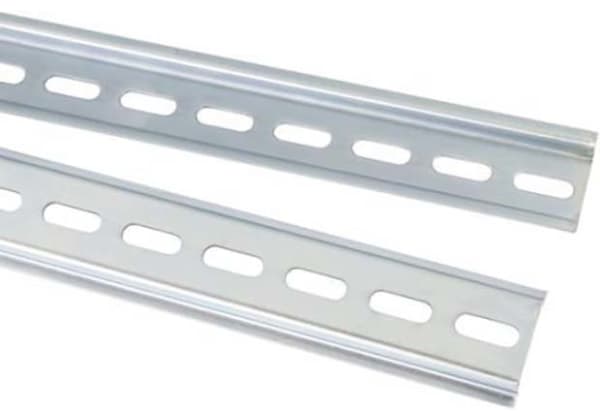- Published 24 Jan 2023
- Last Modified 4 Sept 2023
- 8 min
A Complete Guide to RF Adapters and RF Connectors
Our comprehensive guide explores the different types, sizes, and uses of RF adapters and RF connectors.

What are RF Connectors and Adapters?
Radiofrequency (RF) connectors and adapters are passive electrical components intended to operate at radio frequencies in the multi-megahertz range. They have a wide range of uses, including domestic, professional, industrial, and military applications, and can be used in conjunction with coaxial cable, antennas, radios, test and measurement equipment, and surge protectors, to name just a few examples.
Multiple different types of RF connectors and adapters are available, and as a result, they can be classified in several different ways. These include type, size, impedance, and termination, although they are usually distinguished by their gender and polarity.
How to Install RF Coaxial Connectors
RF coaxial connectors can be installed in one of two different ways.
The first installation method involves simply crimping the connector onto the cable. Alternatively, the connector can be screwed onto the end of the cable. Both installation techniques are commonly used and relatively simple to perform.
Another difference refers to the centre pin. Depending on your preferred installation method, this can be either soldered or crimped. Soldering the centre pin is typically the standard approach, but crimping is a possible alternative.
The following steps provide a handy breakdown describing how to connect an RF adapter to coaxial cable. Remember, you should always make sure to familiarise yourself with the manufacturer’s instructions before beginning the task.
- Decide which method of connection you want to use (crimping or soldering)
- Strip the cable back, as per the manufacturer’s guidelines
- Either crimp or solder the centre pin, depending on the connection type you have chosen
- Attach the outer to complete the process
While this is not a complex process, it is still important to perform it correctly to avoid causing damage to the components. Once you have familiarised yourself with the process and are confident to proceed, following the steps above should help you to complete the task with ease.
There are also three different coupling mechanisms for installation. These are:
- Screwed Coupling – this consists of thread and coupling nut with a maximum torque setting for coupling nut captivation
- Bayonet Coupling – this type of connection is important for sturdy mechanism and faster mounting
- Snap-On Coupling – this is a quick snap-in connection and disengagement mechanism suitable for most small connectors
Types of RF Connectors and RF Adapters
Many different varieties of RF connectors and adapters are available, each suited to different uses and applications. As there are so many different types, it is also worth noting that some are more common than others.
Some of the principal types are explored below:
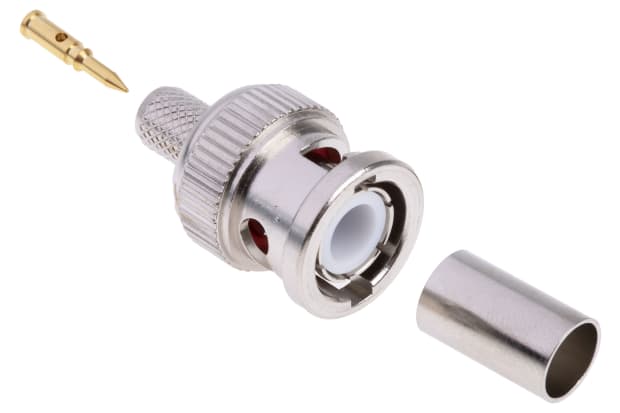
BNC RF Connectors
BNC connectors are arguably the most popular type of RF connector. They are simple to use and ideal for low-frequency RF applications with an operating frequency of 4 GHz.
BNC connectors can be used for video signals, timing, and amateur radio applications. They are available in either 50 Ω or 75 Ω impedance.
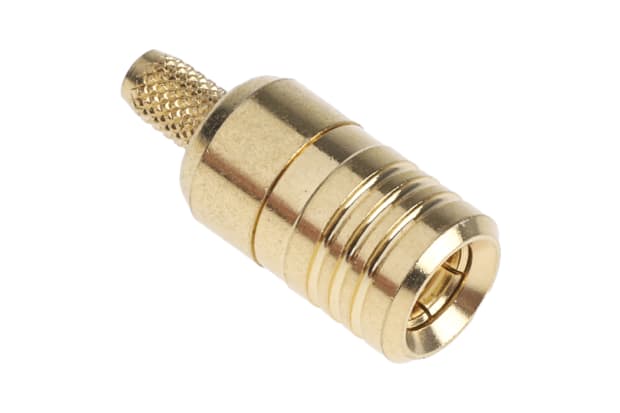
SMB RF Connectors
SMB connectors offer a simple design and easy to use functionality. They perform better at lower frequencies, with an ideal operating frequency of 4 GHz.
SMB connectors can be used for radio applications, base stations, and some types of medical equipment.
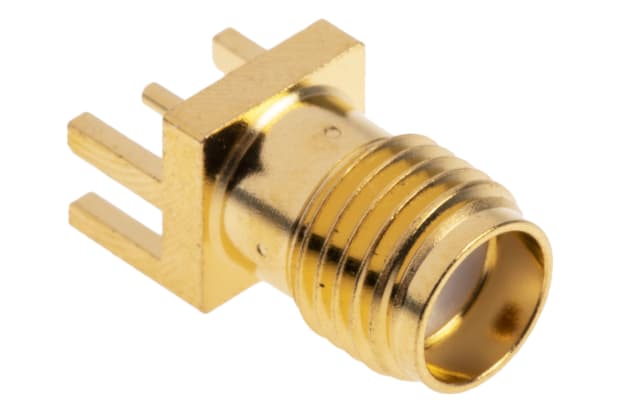
SMA RF Connectors
SMA connectors are small yet reliable, making them another popular choice among professionals. With an operating frequency of 18 GHz, they are also suitable for ultra-high frequencies.
SMA connectors can be used for radio communication boards, RF isolators and power amplifiers, Wi-Fi antennas, and some ultra-high frequency systems.
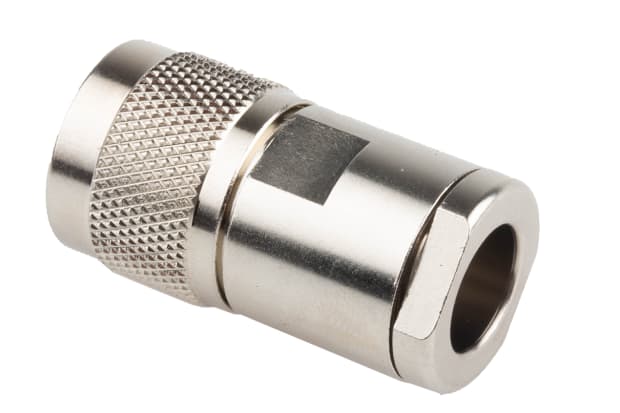
N RF Connectors
N-type connectors are larger than the previous types and offer a robust, stable connection. They have an operating frequency of 11 GHz and are also suitable for use in more heavy-duty environments.
N-type connectors can be used for satellite, communication, and radar systems, as well as well-matched impedance applications.
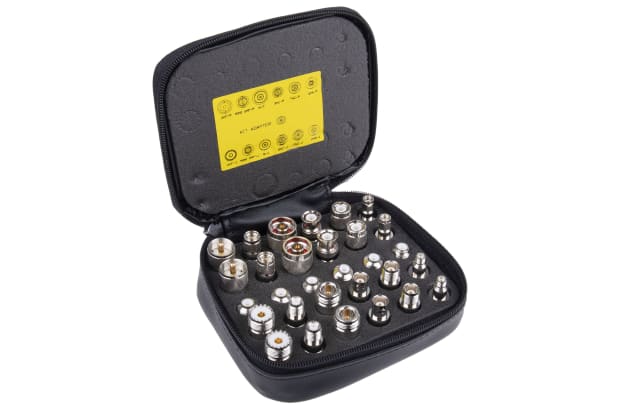
RF Connector Kits
RF connector kits feature an assortment of RF connectors, with varying sizes and types available.
These kits are useful as they offer an extensive variety of connectors for a range of applications. As an example, a typical RF connector kit could include TNC, BNC, SMA, N, and UHF connectors.
Identifying RF Connector Types
This chart is designed to clearly show some of the main RF connector types:
Microminiature | Subminiature | Miniature | Standard | Large |
|---|---|---|---|---|
| BMMA | BMA | BNC | C | GHV |
| MCX | SMA | TRB | HN | LC |
| MMCX | SMK | MHV | N | |
| SMP | SMB | TNC | SC | |
| SMPM | SMC | |||
| MHF | TPS |
RF Connector Frequency Range Chart
In addition to the different types of RF connectors as explained above, these devices are also available to suit varying frequencies.
The chart below provides a concise overview:
Frequency | Connector Type/s |
|---|---|
| 50 MHz | MHV |
| 500 MHz | TRB |
| 1 GHz | GHV, LC |
| 4 GHz | BNC, HN, SMB |
| 6 GHz | MCX, MMCX, MHF |
| 10 GHz | SMC, TPS |
| 11 GHz | C, N, SC, TNC |
| 18 GHz | SMA |
| 22 GHz | BMA |
| 28 GHz | BMMA |
| 40 GHz | SMK, SMP |
| 65 GHz | SMPM |
What is the Difference Between Male and Female Adapters?
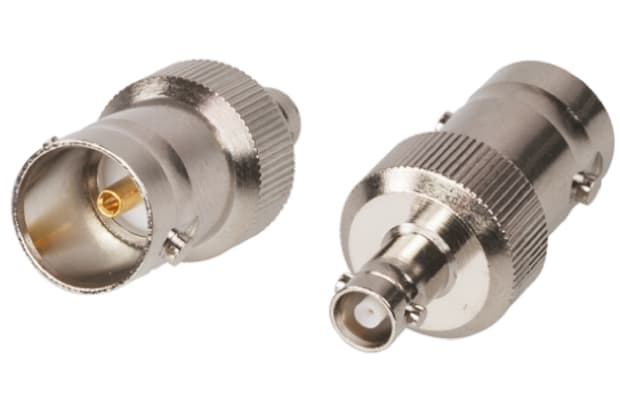
As with the majority of connectors, adapters, and plugs/sockets, RF adapters can also be classified by gender. Both male and female RF connectors are available, so it is important to choose the right type for your application.
Female RF connectors are the type which features the pin, also referred to as the plug. Conversely, an RF connector male type features a hole where the pin on female connectors can be attached to join two separate components together. Male RF connectors are also known as jacks.
This may sound a little confusing, as plugs are usually male and jacks are typically female. However, with RF connectors, it should also be noted that the male housing normally sits inside the female housing when the two are attached, hence the designated genders.
As an example, this BNC connector has a pin so therefore, it is a plug. However, the mating half (this connector, for instance) fits inside so it would usually be considered the female. This leaves you with a female plug and a male jack or socket.

Reverse Polarity Male and Female Connectors
With reverse polarity connectors, the centre pin of the male connector is swapped with the receptacle of the female connector. This means that a reverse polarity male connector will have a receptacle at the interface instead of a centre pin. Therefore, a reverse polarity female connector will have a centre pin at the interface.
RF Adapter Sizes
RF adapters come in a range of sizes to suit different applications and connector sizes. They are typically categorised by type, as seen in the RF connector types chart above, yet these types also refer to the size of the device.
RF adapter sizes are typically available in both metric and imperial measurements, but it is also worth noting that the physical sizes of RF connectors are generally marked in imperial sizes. This is because many leading brands and manufacturers for these components are based in the USA so the connectors were designed and developed using imperial sizes. However, if you need to know the size of a component in metric measurements, it is easy enough to do a standard imperial to metric size conversion to ensure you select the right sized connector for your application.
RF Adapter Applications
RF adapters can be used in a wide variety of applications, including domestic, commercial, professional, and industrial environments. In short, RF adapters can be used wherever there is a need to make a connection using a coaxial cable.
In addition, adapters can also convert from one type of connector to another. This could include use with legacy machinery, for example. This makes these adapters highly versatile and useful devices in a wide range of different applications.
It is also worth noting that there is no universal connector. This is because specialised connectors are required for particularly high-frequency applications. As a result, RF adapters are also useful to enable test equipment to be used which generally feature BNC connectors.
What is the Difference Between RF and Coaxial?
The terms RF and coaxial are often used interchangeably, but it is important to note the distinction between the two.
In simple terms, RF is the signals which are transferred through shielded cables while coaxial typically refers to the cable itself. RF signals are often transmitted via coaxial cable, and it is also possible for coaxial cable to feature RF receivers and transmitters at the ends, too. Coaxial cables are sometimes called RF cables due to this, yet it is a common misconception that RF and coaxial mean the same thing.
Many RF connectors can be used with coaxial cable to provide highly-screened connections. This means that they are suitable for use with RF applications, certain test and measurement equipment, and environments where both RF and screening applications are required.
